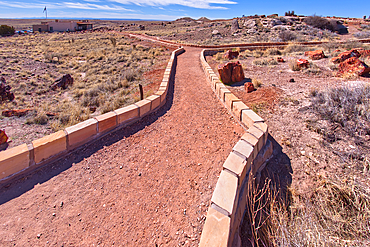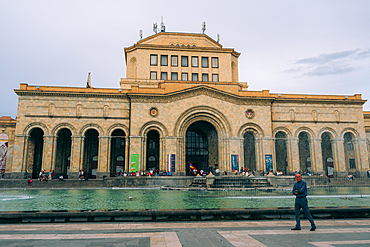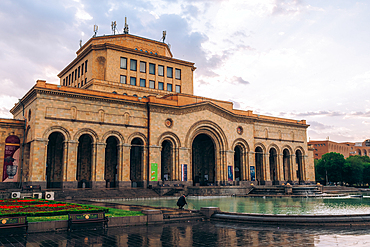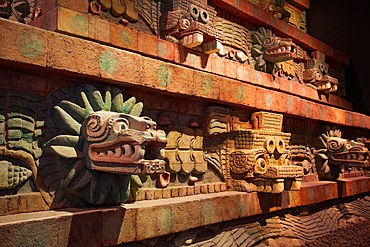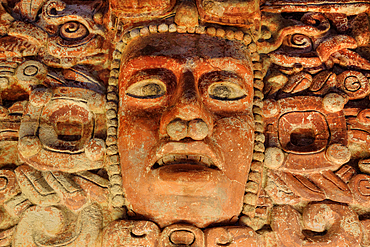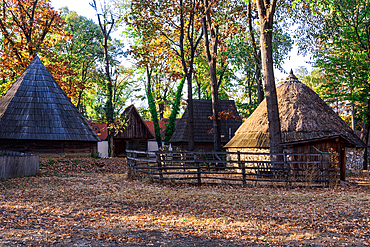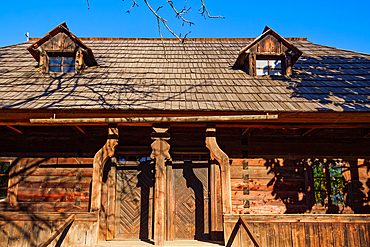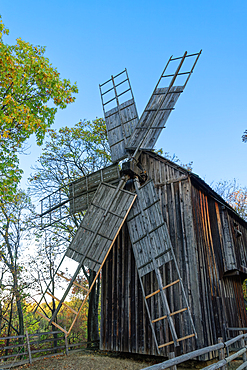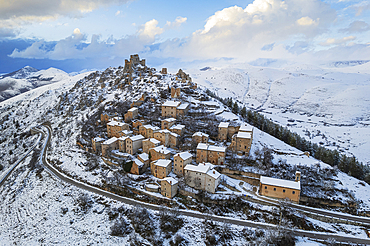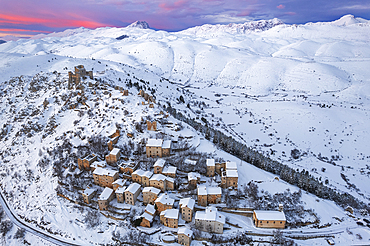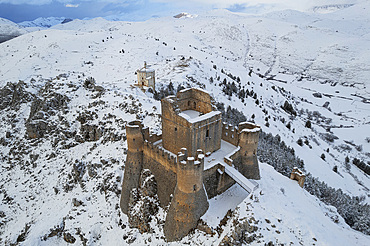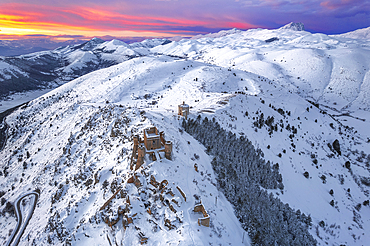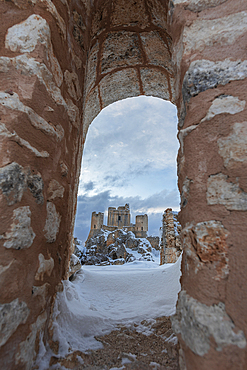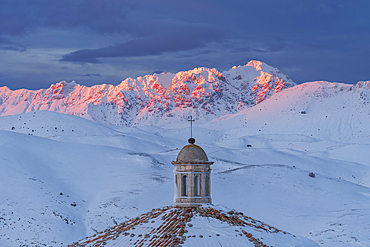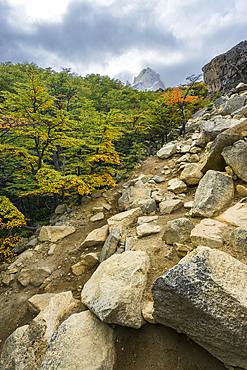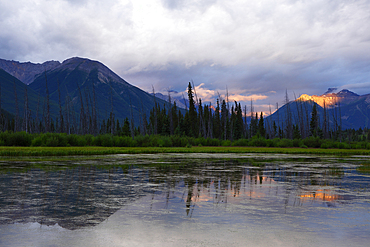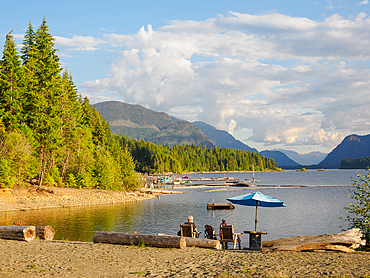Recent searches
Loading...
1382-208 - ancient beehives in the Beekeeping Museum, Stripeikiai, Aukstaitija National Park, Lithuania, Europe
1382-209 - ancient beehives in the Beekeeping Museum, Stripeikiai, Aukstaitija National Park, Lithuania, Europe
1382-207 - phacelia (Phacelia tanacetifolia) in front of ancient beehives in the Beekeeping Museum, Stripeikiai, Aukstaitija National Park, Lithuania, Europe
1384-280 - Reproduction facade of Hochob temple, Chenes culture architecture, National Museum of Anthropology, Mexico City, Mexico
1384-163 - National Museum of Arts, Museo Nacional de Arte, Centro Historico, Mexico City, Mexico built c 1900
1384-143 - Fountain in courtyard inside the National Anthropology Museum, Museo Nacional de Antropología, Mexico City, Mexico
1384-141 - Exterior of the National Anthropology Museum, Museo Nacional de Antropología, Mexico City, Mexico
1384-142 - Exterior of the National Anthropology Museum, Museo Nacional de Antropología, Mexico City, Mexico
1382-72 - Medieval brick castle overhanging the Gauja River,Turaida Museum Reserve,Sigulda,Gauja National
1382-71 - Medieval brick castle,Turaida Museum Reserve,Sigulda,Gauja National Park,Vidzeme Region,Latvia,Baltic region,Northern Europe
1382-70 - stone sculpture by Indulis Ranka in the Folk Song park,Turaida Museum Reserve,Sigulda,Gauja National Park,Vidzeme Region,Latvia,Baltic region,Northern Europe
1382-69 - stone sculpture by Indulis Ranka in the Folk Song park,Turaida Museum Reserve,Sigulda,Gauja National Park,Vidzeme Region,Latvia,Baltic region,Northern Europe
1382-68 - Turaida church is one of the oldest wooden churches in Latvia, built in 1750,Turaida Museum Reserve,Sigulda,Gauja National Park,Vidzeme Region,Latvia,Baltic region,Northern Europe
1382-67 - new living house of estate manager,Turaida Museum Reserve,Sigulda,Gauja National Park,Vidzeme Region,Latvia, Baltic region,Northern Europe
1382-20 - Stove glazed clay tile from late 15th century, National Museum, Palace of the Grand Dukes of Lithuania, Vilnius, Lithuania, Europe
1382-19 - Stove glazed clay tile from late 15th century, National Museum, Palace of the Grand Dukes of Lithuania, Vilnius, Lithuania, Europe
1382-18 - Decorative clay tile with a griffin, 14th-15th century, National Museum, Palace of the Grand Dukes of Lithuania, Vilnius, Lithuania, Europe
1311-906 - A divide in the trail loop for the Giant Logs trail at Petrified Forest National Park Arizona. On the upper left is the Rainbow Forest Museum.
1351-303 - Republic Square and the National History Museum of Armenia in Yerevan, Armenia (Hayastan), Caucasus
1351-297 - View of the National History Museum of Armenia from the Vernissage market in Yerevan, Armenia (Hayastan), Caucasus
1351-294 - Republic Square and the National History Museum of Armenia in Yerevan, Armenia (Hayastan), Caucasus
801-3804 - Quetzalcoatl Heads, Temple of Quetzalcoatl, (reproduction), National Museum of Anthropology, Mexico City, Mexico
801-3803 - Mural Fragments (650-950 AD), from Cacaxtla, Puebla, National Museum of Anthropology, Mexico City, Mexico
801-3801 - Urn (100 BC - 200 AD), from Tomb 77, Monte Alban, National Museum of Anthropology, Mexico City, Mexico
801-3802 - Mural Fragments (650-950 AD), from Cacaxtla, Puebla, National Museum of Anthropology, Mexico City, Mexico
801-3800 - Mural fro Tomb 105 (Reproduction), 250-500 AD, from Monte Alban, National Museum of Anthropology, Mexico City, Mexico
801-3798 - Olmec Colossal Head, 1,200-600 BC, from San Lorenzo, Veracruz, National Museum of Anthropology, Mexico City, Mexico
801-3799 - Olmec Colossal Head, 1,200-600 BC, from San Lorenzo, Veracruz, National Museum of Anthropology, Mexico City, Mexico
801-3797 - Goddess of Fertility (foreground), 200-900 AD, from Veracruz Area, National Museum of Anthropology, Mexico City, Mexico
801-3795 - Lintel 48 (600-800 AD), from Yaxchilan, Chiapas, National Museum of Anthropology, Mexico City, Mexico
801-3796 - Dios del Agua, (foreground, right), 900-1550 AD, from Puebla Area, National Museum of Anthropology, Mexico City, Mexico
801-3794 - Stela 51 (731 AD), from Calakmul, National Museum of Anthropology, Mexico City, Mexico
801-3792 - El Frisco de Placeres, (400-600 AD), from Los Placersos, Campeche, National Museum of Anthropology, Mexico City, Mexico
801-3793 - El Frisco de Placeres, (400-600 AD), from Los Placersos, Campeche, National Museum of Anthropology, Mexico City, Mexico
801-3791 - Atlantes Figures (1000-1250 AD), from Chichen Itaza, Yucatan, National Museum of Anthropology, Mexico City, Mexico
801-3790 - Atlantes Figures (1000-1250 AD), from Chichen Itaza, Yucatan, National Museum of Anthropology, Mexico City, Mexico
801-3789 - Ceramic Figure (200-600 AD), from Tambas de Tiro, National Museum of Anthropology, Mexico City, Mexico
844-32674 - View of Christmas market and Christmas tree in front of The National Gallery in Trafalgar Square at dusk, Westminster, London, England, United Kingdom, Europe
844-32673 - View of Christmas market and The National Gallery in Trafalgar Square at dusk, Westminster, London, England, United Kingdom, Europe
844-32672 - View of Christmas market and The National Gallery in Trafalgar Square at dusk, Westminster, London, England, United Kingdom, Europe
844-32670 - View of Christmas market and The National Gallery in Trafalgar Square at dusk, Westminster, London, England, United Kingdom, Europe
844-32671 - View of Christmas market and The National Gallery in Trafalgar Square at dusk, Westminster, London, England, United Kingdom, Europe
844-32669 - View of Christmas market and The National Gallery in Trafalgar Square at dusk, Westminster, London, England, United Kingdom, Europe
1278-346 - Authentic peasant settlements exhibiting traditional Romanian village life inside Dimitrie Gusti National Village Museum, Bucharest, Romania, Europe
1278-345 - Authentic peasant settlements exhibiting traditional Romanian village life inside Dimitrie Gusti National Village Museum, Bucharest, Romania, Europe
1278-344 - Authentic peasant settlements exhibiting traditional Romanian village life inside Dimitrie Gusti National Village Museum, Bucharest, Romania, Europe
1278-343 - Historic windmill exhibited as part of a traditional Romanian village life inside Dimitrie Gusti National Village Museum, Bucharest, Romania, Europe
1352-156 - Facade of the Museo Nacional de Arte Romano (National Museum of Roman Art), Merida, Extremadura, Badajoz, Spain, Europe
1235-98 - Castle of Kruje, The National Skanderberg Museum, Kruje, Albania, Europe
1235-92 - Castle of Kruje, The National Skanderberg Museum, Kruje, Albania, Europe
832-403455 - A mother with her son visiting the National Historical Museum in Skanderbeg Square in Tirana. Albania
832-403445 - Selfie of a tourist blogger at the entrance to the National Historical Museum in Skanderbeg Square in Tirana. Albania
1245-2637 - Zacheta National Gallery of Art, detailed view, Warsaw, Masovian Voivodeship, Poland, Europe
1245-2635 - Zacheta National Gallery of Art, detailed view, Warsaw, Masovian Voivodeship, Poland, Europe
1359-698 - Chilean National Museum of Fine Arts, Santiago, Santiago Metropolitan Region, Chile, South America
1359-694 - Detail of facade of Chilean National Museum of Fine Arts, Santiago, Santiago Metropolitan Region, Chile, South America
1359-348 - Monkey puzzle tree (Araucaria araucana), El Toro Lake, Huerquehue National Park, Pucon, Chile, South America
1359-347 - Wooden boardwalk leading to area of barren trees affected by fire, near Refugio Paine Grande, Torres del Paine National Park, Patagonia, Chile, South America
1359-345 - Lake Nordenskjold and peaks of Los Cuernos, Torres del Paine National Park, Patagonia, Chile, South America
1361-75 - Lonely house above the basalt cliff near the harbour, Arnarstapi, Snaefellsjokull National Park, Snaefellsness peninsula, Vesturland, Western Iceland, Iceland, Polar Regions
1361-68 - Aerial winter view of the snow covered medieval village of Rocca Calascio with the castle surrounded by clouds at dusk, Rocca Calascio, Gran Sasso e Monti della Laga National Park, Campo Imperatore, L'Aquila province, Abruzzo region, Italy, Europe
1361-67 - Aerial winter view of the snow covered medieval village of Rocca Calascio with the castle and pink sky at sunset, Rocca Calascio, Gran Sasso e Monti della Laga National Park, Campo Imperatore, L'Aquila province, Abruzzo region, Italy, Europe
1361-65 - Close-up aerial view of the snow covered medieval castle of Rocca Calascio and the church of Santa Maria della Pieta� at dusk, Rocca Calascio, Gran Sasso e Monti della Laga National Park, Campo Imperatore, L'Aquila province, Abruzzo region, Italy, Europe
1361-66 - Aerial winter view of the snow covered Rocca Calascio castle and church of Santa Maria della Pieta,�with pink clouds at sunset, Rocca Calascio, Gran Sasso e Monti della Laga National Park, Campo Imperatore, L'Aquila province, Abruzzo, Italy, Europe
1361-64 - The snow covered castle of Rocca Calascio among ruins of the old village seen from an arch, Rocca Calascio, Gran Sasso e Monti della Laga National Park, Campo Imperatore, L'Aquila province, Abruzzo, Italy, Europe
1361-63 - Close-up view of the roof of the church of Santa Maria della Pieta with snow covered mountains of Gran Sasso lit at sunset, Rocca Calascio, Gran Sasso e Monti della Laga National Park, Campo Imperatore, L'Aquila province, Abruzzo, Italy, Europe
1361-62 - Winter view of the Renaissance church of Santa Maria della Pieta with snow seen from the castle of Rocca Calascio, Gran Sasso e Monti della Laga National Park, Campo Imperatore, L'Aquila province, Abruzzo, Italy, Europe
1359-303 - Tree, Milarrochy Bay, Loch Lomond and Trossachs National Park, Scotland, United Kingdom, Europe
1359-342 - Tree and Tinquilco lake, Huerquehue National Park, Pucon, Chile, South America
1359-340 - Tinquilco lake, Huerquehue National Park, Pucon, Chile, South America
1359-335 - River flowing by Paine Grande mountain in French Valley, Torres del Paine National Park, Patagonia, Chile, South America
1359-328 - Paine Grande mountain in French Valley, Torres del Paine National Park, Patagonia, Chile, South America
1359-326 - Tree and Tinquilco lake, Huerquehue National Park, Pucon, Chile, South America
1359-362 - Laguna Torre, Los Glaciares National Park, UNESCO World Heritage Site, El Chalten, Patagonia, Argentina, South America
1359-358 - Hiking path leading to Britanico viewpoint, French Valley, Torres del Paine National Park, Patagonia, Chile, South America
1359-357 - Cerro Condor, Tierra del Fuego National Park, Patagonia, Argentina, South America
1359-355 - Mountains in Beagle Channel, Lapataia Bay, Tierra del Fuego National Park, Patagonia, Argentina, South America
1359-356 - River flowing by Paine Grande mountain in French Valley, Torres del Paine National Park, Patagonia, Chile, South America
1359-351 - Beaver trail (castorera) and area of beaver dams, Tierra del Fuego National Park, Patagonia, Argentina, South America
1359-350 - Barren trees in valley leading to Laguna Torre, Los Glaciares National Park, UNESCO World Heritage Site, El Chalten, Argentina, South America
1365-137 - Early morning light, Vermillion Lakes, Banff National Park, UNESCO World Heritage Site, Alberta, Rocky Mountains, Canada, North America
1365-136 - Mount Rundle and Vermillion Lakes, Banff National Park, UNESCO World Heritage Site, Alberta, Rocky Mountains, Canada, North America
1365-134 - Mount Rundle and Vermillion Lakes, Banff National Park, UNESCO World Heritage Site, Alberta, Rocky Mountains, Canada, North America
1365-133 - Waterton Lakes National Park, Alberta, Rocky Mountains, Canada, North America
1365-131 - Mount Rundle and Vermillion Lakes, Banff National Park, UNESCO World Heritage Site, Alberta, Rocky Mountains, Canada, North America
1359-384 - Svinafellsjokull Glacier, Skaftafell National Park, Iceland, Polar Regions
1359-341 - French Valley viewpoint, Torres del Paine National Park, Patagonia, Chile, South America
1242-522 - Strathcona National Park, Vancouver Island, British Columbia, Canada, North America
1242-516 - Strathcona National Park, Vancouver Island, British Columbia, Canada, North America
1350-6678 - Strawberry Poison Frog (Dendrobates pumilio), adult, Bastimentos National Park, Bocas del Toro, Panama. The strawberry poison frog or strawberry poison-dart frog (Oophaga pumilio or Dendrobates pumilio) is a species of small amphibian poison dart frog found in Central America. It is common throughout its range, which extends from eastern central Nicaragua through Costa Rica and northwestern Panama. The species is often found in humid lowlands and premontane forest, but large populations are also found in disturbed areas such as plantations. The strawberry poison frog is perhaps most famous for its widespread variation in coloration, comprising approximately 15���30 color morphs, most of which are presumed to be true-breeding. O. pumilio, while not the most poisonous of the dendrobatids, is the most toxic member of its genus. The species is most diverse in Panama with varieties in vivid shades of all red, orange, blue, yellow or green, green and yellow, white with red, orange or black and spotted varieties. The most colorful mix is found in Isla Bastimentos Marine National Park though not all in one place. Colors vary by location. A beach on the north side of the island is named after the species. Two of Southern Explorations' Panama tours visit red frog habitat. Both the eight-day Panama Adventure trip and eleven-day Panama Highlights trip spend time in Isla Bastimentos Marine National Park and the former also goes to Red Frog Beach.
The red frog is not as poisonous as some of its cousins and is not a threat to humans. It subsists on a diet of ants that dine on poisonous plants, providing the red frog its protective skin toxin. Males attract females with a loud quick chirp. To hear the distinctive sound before you depart on your Panama tours, go to the University of Michigan Museum's biodiversity website (www.animaldiversity.ummz.umich.edu.) After birth, the tadpoles climb aboard the mother who deposits them in different protected areas where she retu
1365-18 - Torres del Paine National Park, Patagonia, Chile, South America
1365-16 - Torres del Paine National Park, Patagonia, Chile, South America
1365-17 - Torres del Paine National Park, Patagonia, Chile, South America
1365-15 - Grey Glacier, Torres del Paine National Park, Patagonia, Chile, South America
1365-14 - Torres and Cuernos, Torres del Paine National Park, Patagonia, Chile, South America
1365-12 - Torres del Paine National Park, Patagonia, Chile, South America
1365-13 - Torres del Paine National Park, Patagonia, Chile, South America
1365-11 - Grey Glacier, Torres del Paine National Park, Patagonia, Chile, South America
1365-10 - Torres and Cuernos, Torres del Paine National Park, Patagonia, Chile, South America
1365-9 - Torres and Cuernos, Torres del Paine National Park, Patagonia, Chile, South America

















